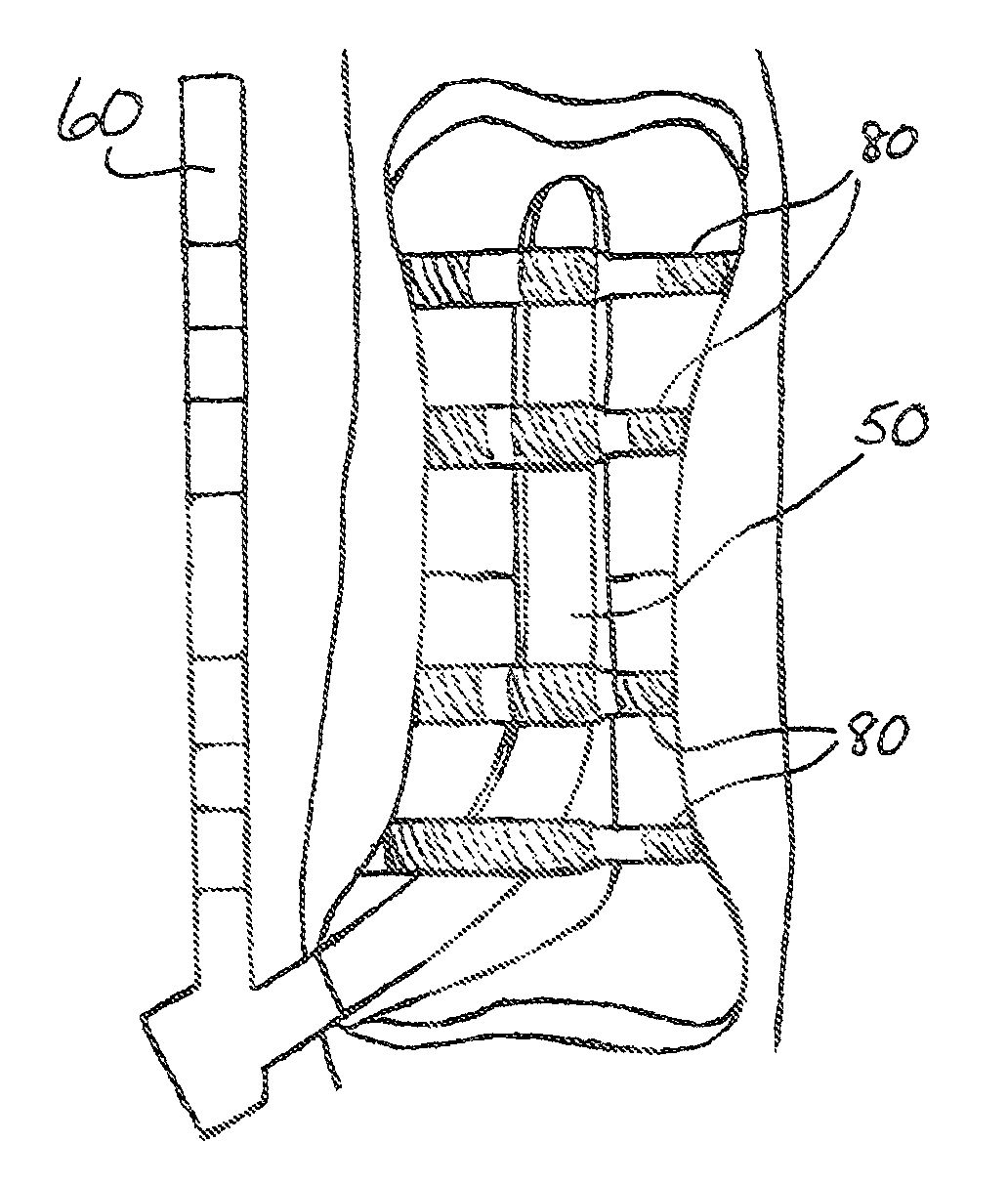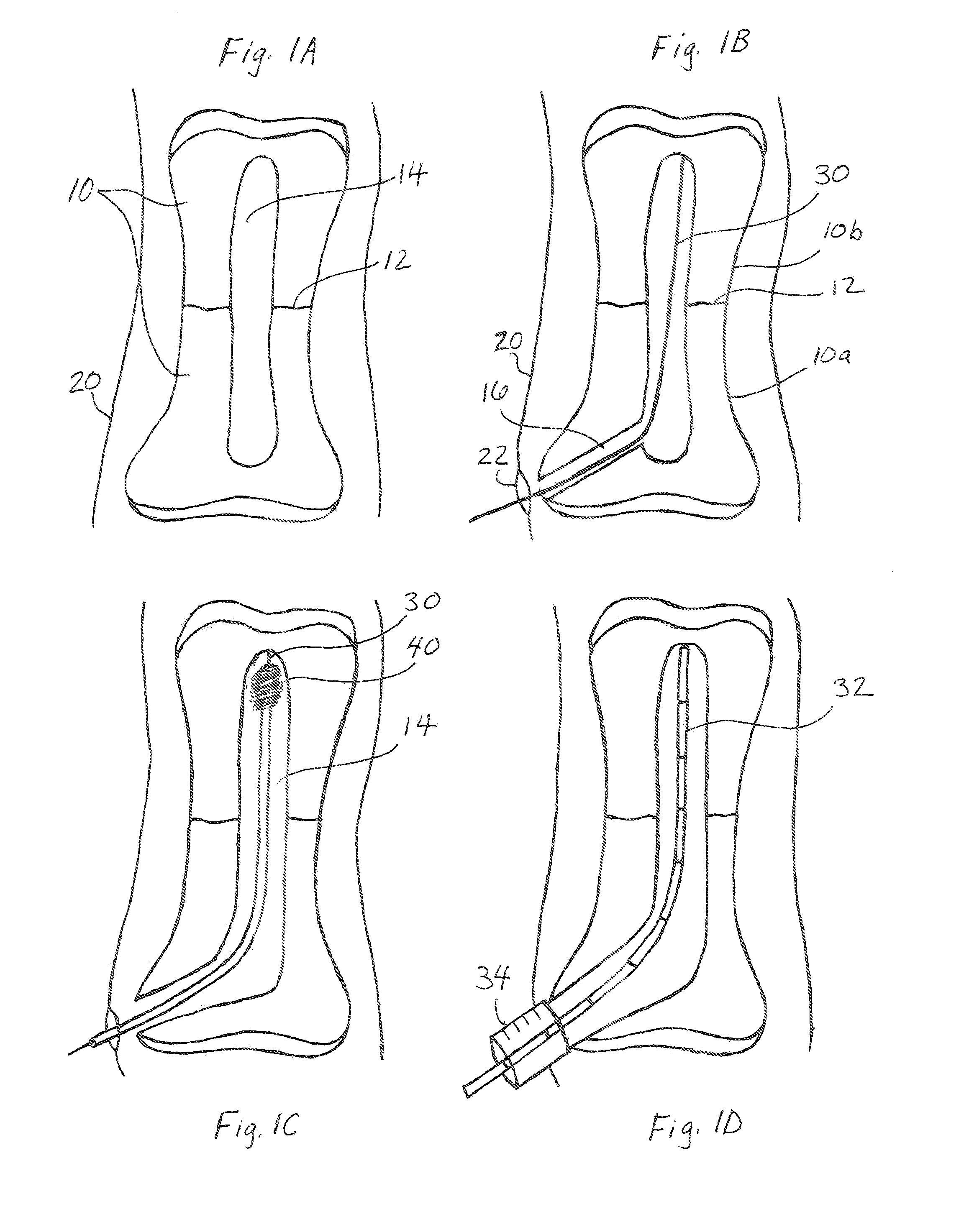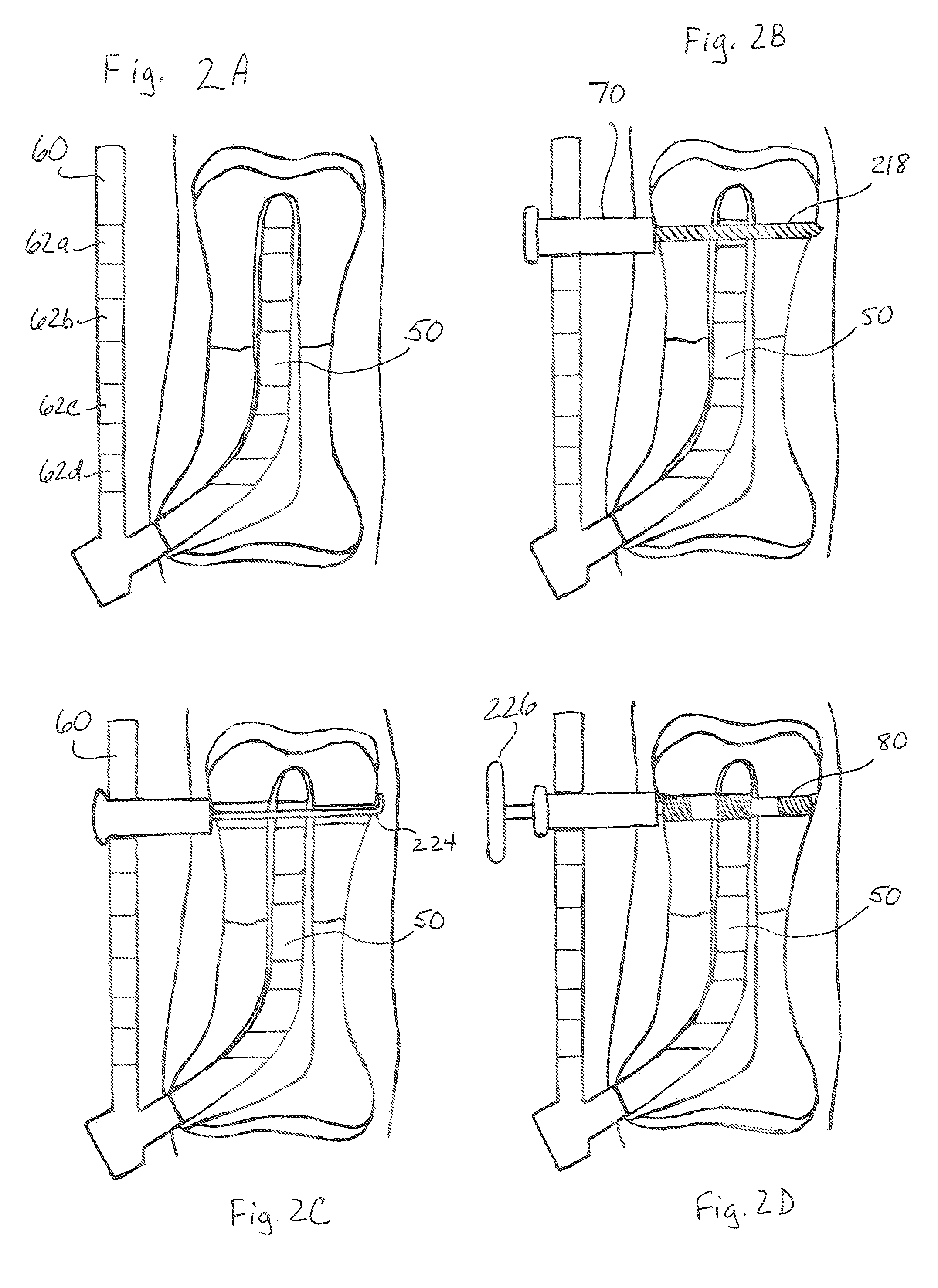Intramedullary rod fixation system
a technology of intramedullary rods and fixation systems, which is applied in the field of intramedullary rod fixation systems, can solve the problems of profound loss of function and disability of not only the hand, but the patient as a whole, and the impairment of the hand function, so as to accelerate the return of motion and function, avoid adhesion and injury, and minimize the trauma of soft tissues and tendons
- Summary
- Abstract
- Description
- Claims
- Application Information
AI Technical Summary
Benefits of technology
Problems solved by technology
Method used
Image
Examples
Embodiment Construction
[0043]As shown in FIG. 1A, the technique for fixation of a fracture 12 in a bone 10 would be to first correct the fracture alignment by indirect reduction. Then a small incision 22 as shown in FIG. 1B would be made through the skin 20 and extensor tendon (not shown) down to the bone at the base of the bone. The base of the proximal phalanx would be used for fixation of a proximal phalanx fracture and the base of the middle phalanx would be used for fixation of a middle phalanx fracture. In one embodiment, an awl would be used to make an opening 16 in the base of the bone. The location of the awl and correct entrance into the bone would be verified under fluoroscopic x ray. Alternatively, the opening 16 in the base of the bone could be made with a drill and soft tissue guide. Then, as shown in FIG. 1B, a guide wire 30 would be placed through the opening 16, into the intramedullary canal 14 of the proximal fragment 10a, across the fracture 12 and into the intramedullary canal of the d...
PUM
 Login to View More
Login to View More Abstract
Description
Claims
Application Information
 Login to View More
Login to View More - R&D
- Intellectual Property
- Life Sciences
- Materials
- Tech Scout
- Unparalleled Data Quality
- Higher Quality Content
- 60% Fewer Hallucinations
Browse by: Latest US Patents, China's latest patents, Technical Efficacy Thesaurus, Application Domain, Technology Topic, Popular Technical Reports.
© 2025 PatSnap. All rights reserved.Legal|Privacy policy|Modern Slavery Act Transparency Statement|Sitemap|About US| Contact US: help@patsnap.com



